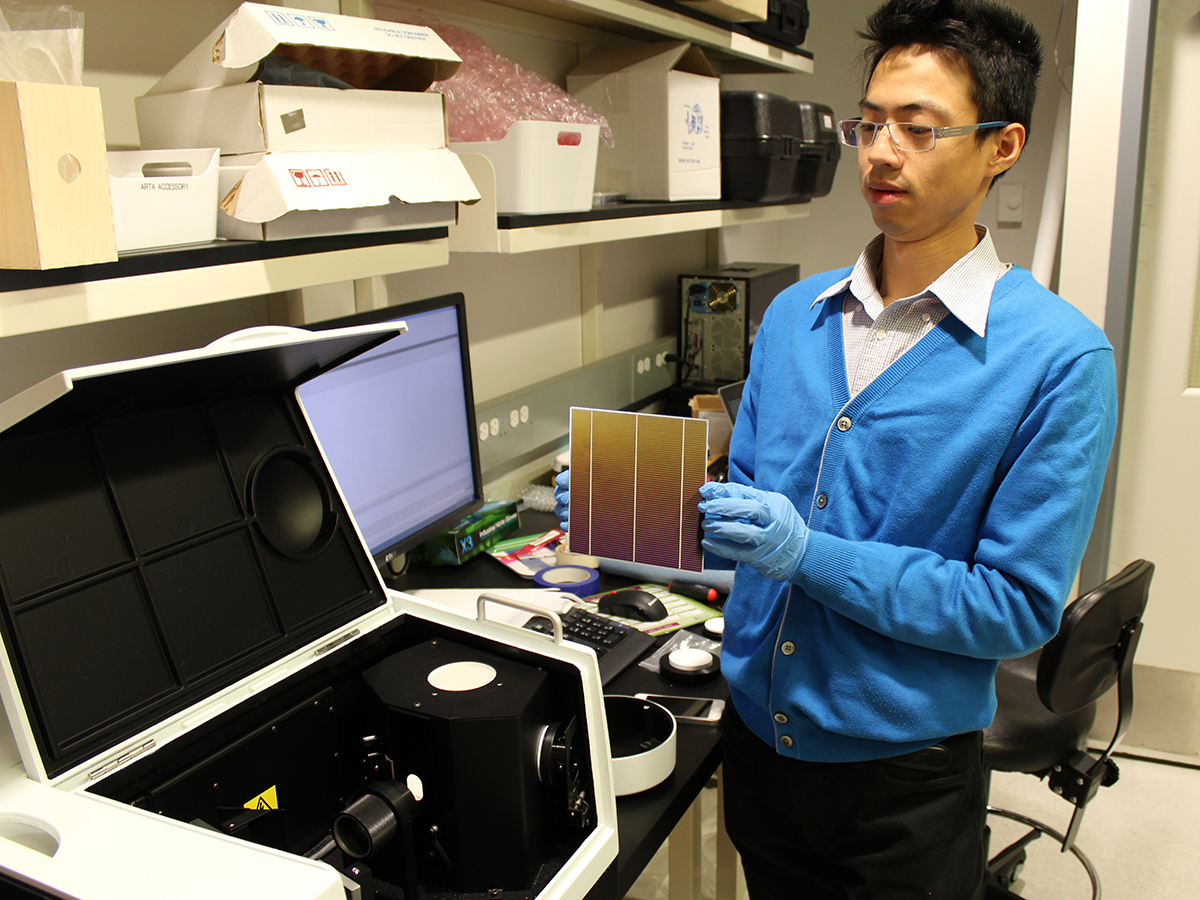
ASU research demonstrates silicon-based tandem photovoltaic modules can compete in solar market
Nature-Energy features ASU study that depicts acceptable intersection of improved solar technology costs vs. efficiency

ASU Assistant Professor Zachary Holman reflects on the efficiency of new solar technologies vs. the costs. Photo by Deanna Dent/ASU Now
New solar energy research from Arizona State University demonstrates that silicon-based tandem photovoltaic modules, which convert sunlight to electricity with higher efficiency than present modules, will become increasingly attractive in the U.S.
A paper that explores the costs vs. enhanced efficiency of this new solar technology appears in Nature Energy this week. The paper is authored by Ira A. Fulton Schools of Engineering Assistant Research Professor Zhengshan J. Yu, graduate student Joe V. Carpenter and Assistant Professor Zachary Holman.

ASU Assistant Research Professor Zhengshan Yu addresses how current solar cell technologies are reaching the limits of efficiency. Photo courtesy of ASU Holman Lab
The Department of Energy’s SunShot Initiative was launched in 2011 with a goal of making solar cost-competitive with conventional energy sources by 2020. The program attained its goal of $0.06 per kilowatt-hour three years early, and a new target of $0.03 per kilowatt-hour by 2030 has been set. Increasing the efficiency of photovoltaic modules is one route to reducing the cost of the solar electricity to this new target. If reached, the goal is expected to triple the amount of solar installed in the U.S. in 2030 compared to the business-as-usual scenario.
But according to Holman, “the dominant existing technology — silicon — is more than 90 percent of the way to its theoretical efficiency limit,” precipitating a need to explore new technologies. More efficient technologies will undoubtedly be more expensive, however, which prompted the paper co-authors to ask, “Does a doubling of module efficiency warrant a doubling of cost?”
Tandem modules stack two, complementary photovoltaic materials — for instance, a perovskite solar cell atop a silicon solar cell — to best use the full spectrum of colors emitted by the sun and exceed the efficiency of either constituent solar cell on its own. The study was designed to determine how much more expensive high-efficiency tandem photovoltaic modules can be and still compete in the evolving solar marketplace.
Results indicate that in the expected 2020 U.S. residential solar market, 32-percent-efficient anticipated tandem modules can cost more than three times that of projected 22-percent-efficient silicon modules and still produce electricity at the same cost. This premium, however, is a best-case scenario that assumes the energy yield, degradation rate, service life and financing terms of tandem modules are similar to those of silicon modules alone. The study also acknowledges that cost premium values will vary according to region.
“Our previous study defines the technological landscape of tandems; this study paints the economic landscape for these future solar technologies that are only now being created in labs,” Yu said. “It tells researchers how much money they’re allowed to spend in realizing the efficiency enhancements expected from tandems.”
Holman’s research group is a leader in silicon-based tandem photovoltaic technologies, having held the efficiency world record in collaboration with Stanford University for a perovskite/silicon tandem solar cell until last month. As the team strives to reclaim the record while sticking to inexpensive materials and simple processes, it now knows that its innovations will likely find their way to a U.S. rooftop.



































